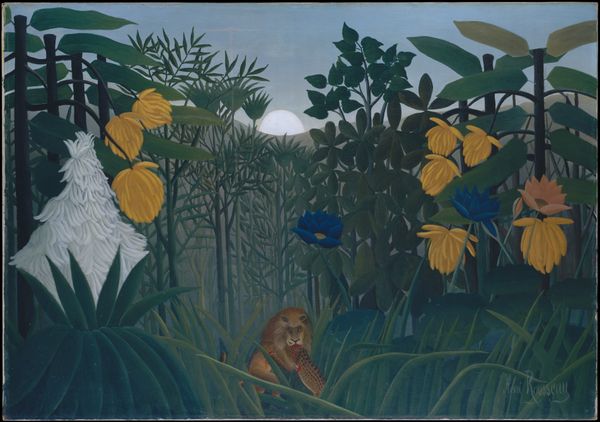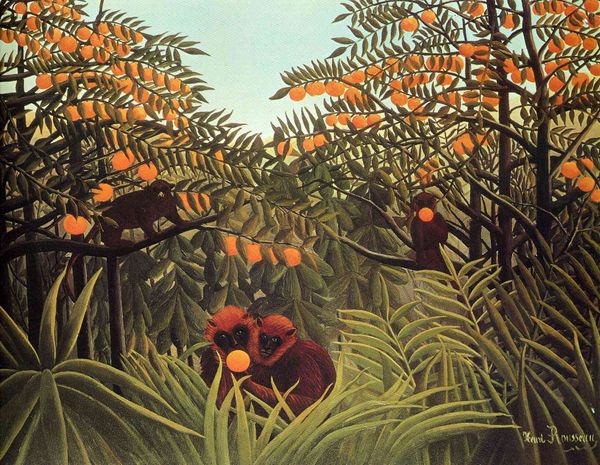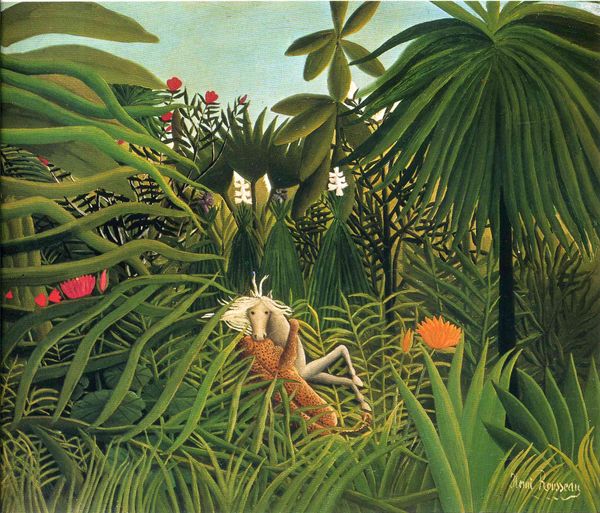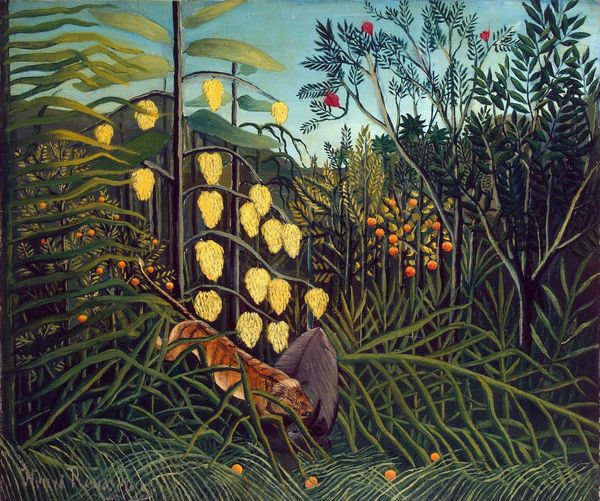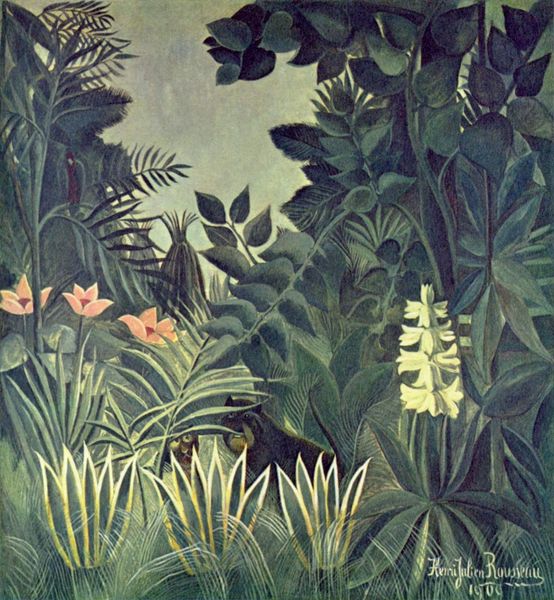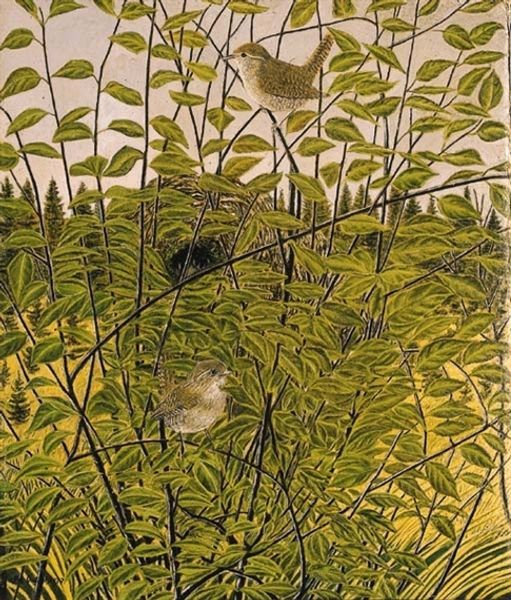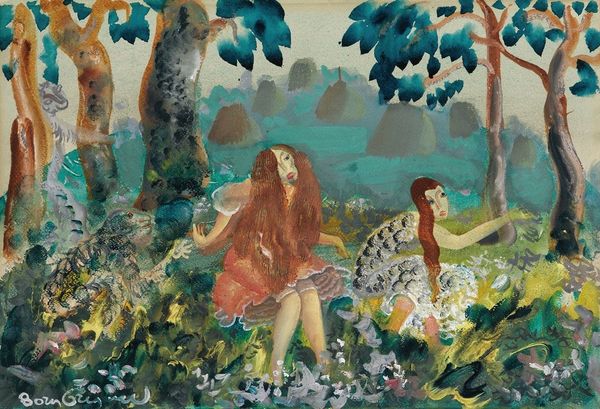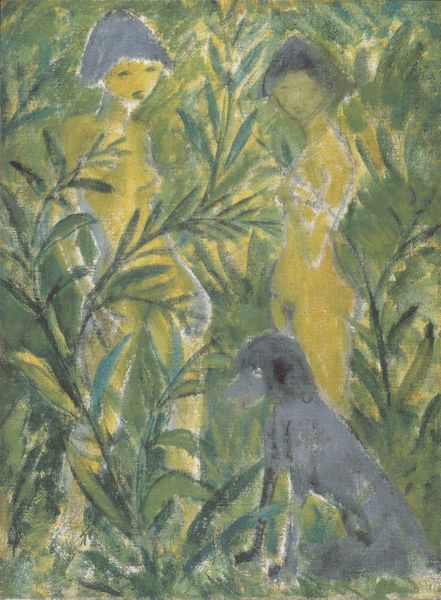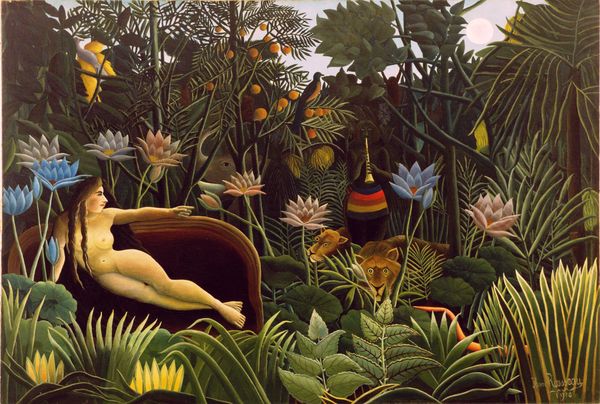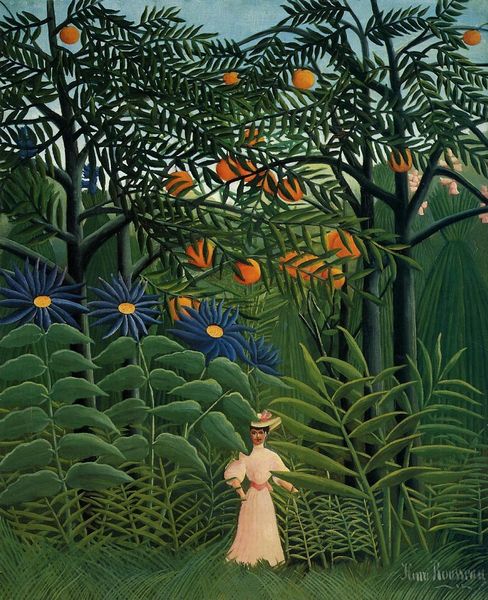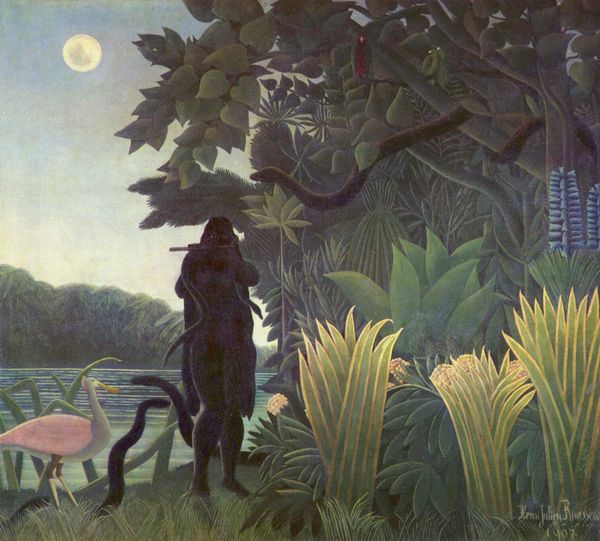
Copyright: Public domain
Curator: Here we have Henri Rousseau’s “The Repast of the Lion,” painted in 1907. This oil on canvas exemplifies his signature style. Editor: Oh, my! It’s got this, dreamy, almost theatrical stillness. Like a stage set right before the curtain rises. But with a very hungry lion! Curator: Indeed. Rousseau, a self-taught artist, created a fascinating jungle scene. His approach, marked by detailed, almost naïve rendering, reflects broader themes prevalent in post-impressionism and Japonisme, defying academic naturalism of the period. What we're seeing here is less a depiction of a literal space than a figuration of colonial and orientalist desires. Editor: That's an intriguing framework to understand this landscape! It's wild because I feel I’ve stumbled into this odd Garden of Eden—everything’s oversized and lush. I'm drawn to the textures of the foliage juxtaposed against the flat planes of colour. The lighting... there’s something unnatural about it. I'm wondering if it's on another planet. Curator: Exactly, and from an intersectional perspective, the imagery here conjures multiple narratives. The male lion as a figure of colonial domination... The jungle representing the ‘untamed’ space subjected to exploitation and control. This connects to a history of European colonial ventures justified by depictions of colonized lands as sources for resources. Editor: Ah, now the repast takes on a new meaning. More sinister, perhaps. But the execution! I’m in love with his audacious colours and the meticulous layering of forms. Each flower seems to have its personality, so present. Curator: These hyper-defined contours flatten depth while enhancing the visionary impact. It defies spatial logic while suggesting a symbolic order. What resonates with you in these stylistic decisions? Editor: I guess the subversion is key; challenging those established colonial art academies and offering, from his unique lens, a space of contemplation and mystery. And I agree! There is something radically tender here. A world both frightening and irresistibly beautiful. Curator: Absolutely, by positioning his work within this lineage of post-impressionism while critically analyzing its social and historical context, we are given opportunity to appreciate both its artistic brilliance and the social critiques it inadvertently unearths. Editor: It's true; looking at this artwork makes me feel the beauty and fragility of existence and, maybe even, the urgent need for new perspectives!
Comments
No comments
Be the first to comment and join the conversation on the ultimate creative platform.
